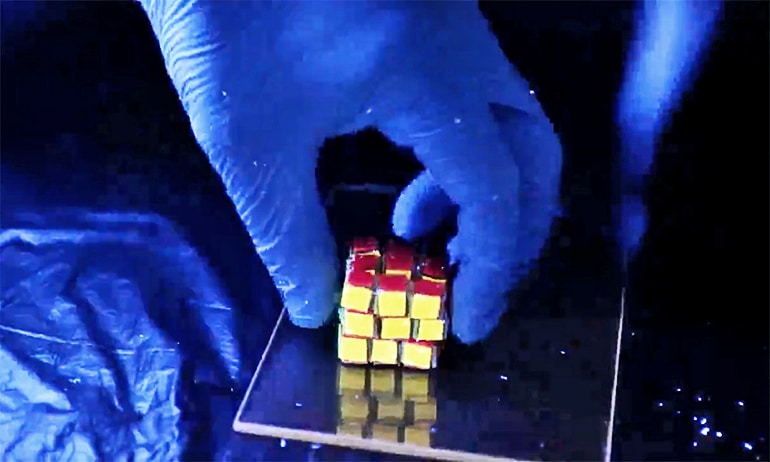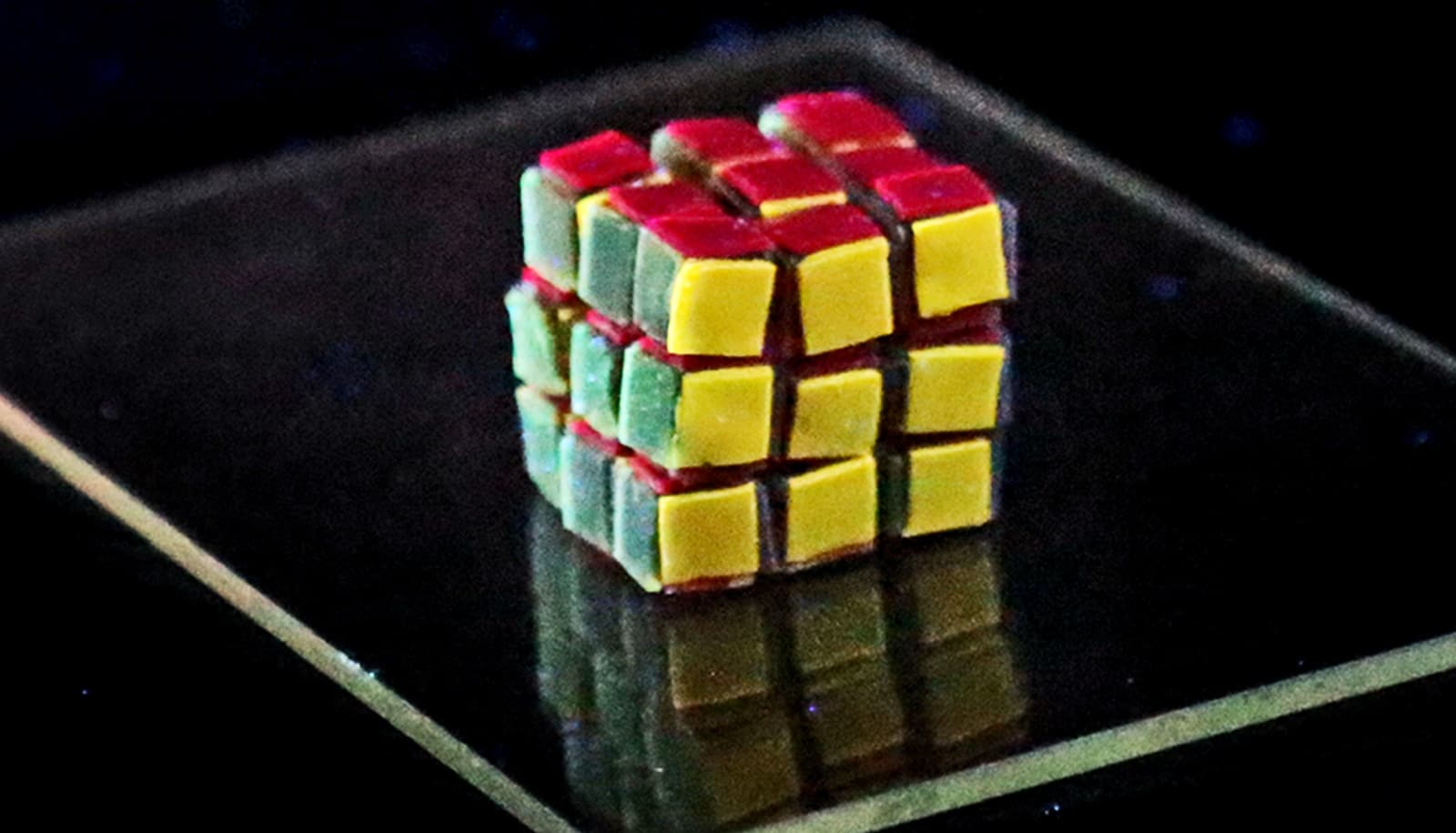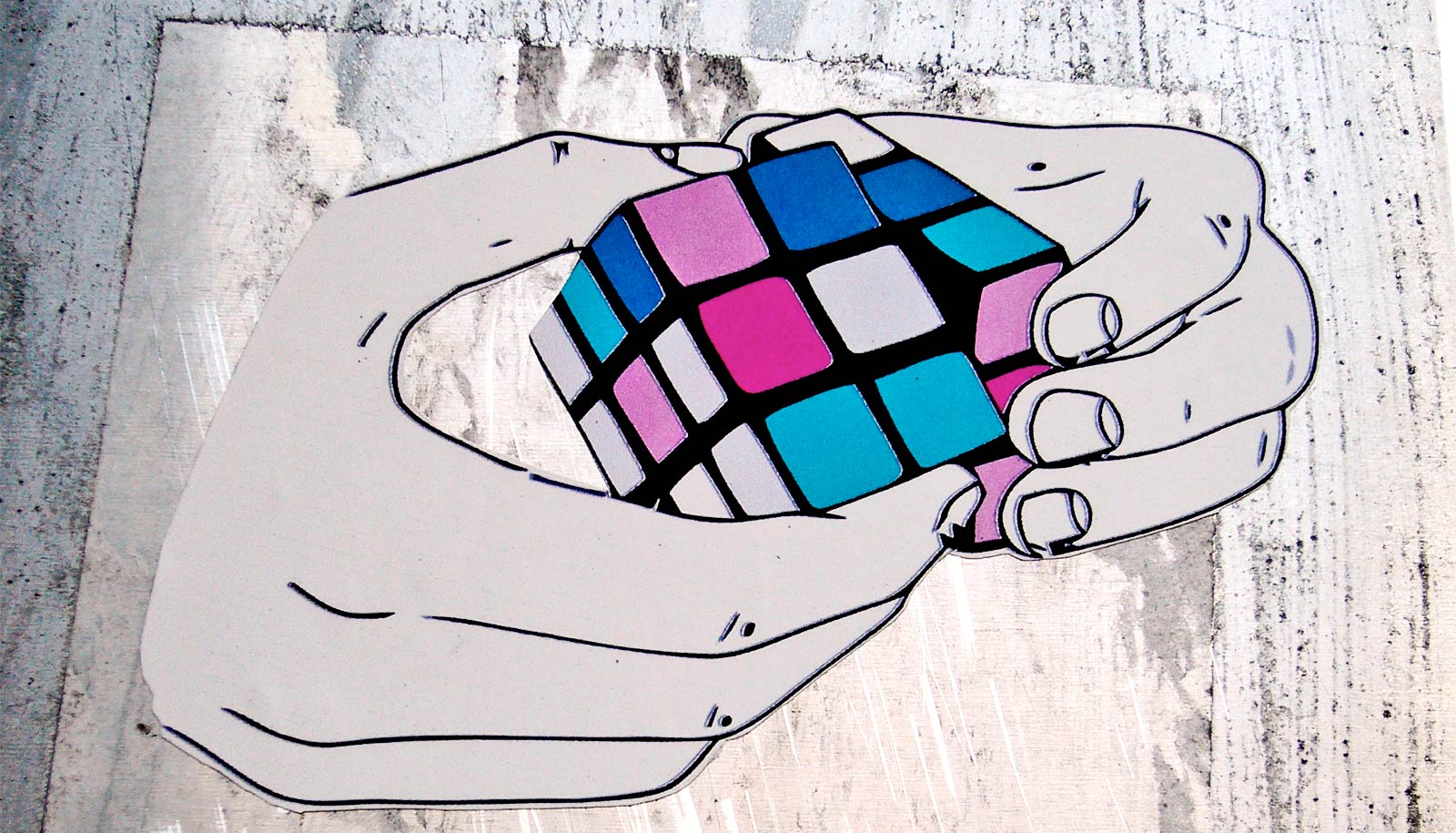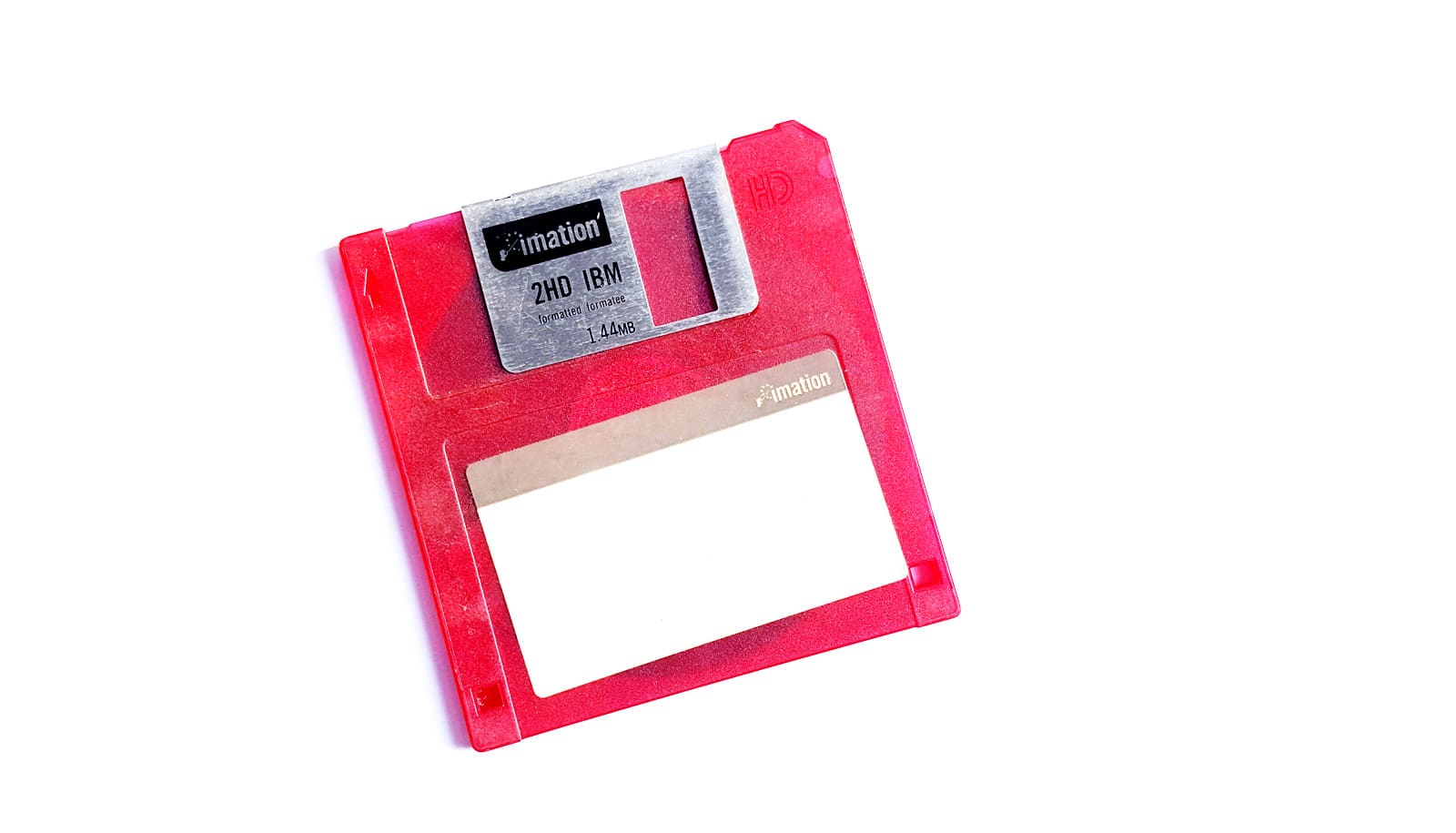A new cube of colored hydrogel blocks might inspire new ways to store and detect information and possibly even help patients monitor their medical conditions.
The cube, which looks and acts like a Rubik’s Cube, contains rotatable individual rows and columns; manipulating them changes the color pattern on the cube’s six faces.
But unlike the rigid plastic of a Rubik’s Cube, the new structure is made of a self-healing hydrogel, a squishy polymer material that can absorb large amounts of water and form new chemical bonds when old bonds break.

Like a physical QR code
The team came up with the structure as part of a larger effort to find new ways to encode information into physical objects.
“Think of QR codes, which are patterns of black and white pixels on a two-dimensional surface used to store information,” says Jonathan Sessler, a professor of chemistry at the University of Texas at Austin and coauthor of the paper in the journal Advanced Materials.
“We’re exploring ways to encode information in patterns of color and in three dimensions, theoretically leading to a much higher information density.”
Mathematicians estimate that there are roughly 43 quintillion—that’s 43 times 10 to 18th power—unique configurations of a Rubik’s Cube, suggesting one cube could store a vast amount of information.
“Over a short time, you can manipulate the interactions between the little blocks,” Sessler says. “It’s sticky, but they aren’t getting stuck. Then over a longer time, say 24 hours, the structure locks into place.”
Remixing hydrogel blocks
Scientists colored the 27 building blocks in the cube using a new class of fluorescent dots invented by Ben Zhong Tang, a chemist at the Hong Kong University of Science and Technology. Xiaofan Ji, a former postdoctoral researcher at University of Texas at Austin, now working in Tang’s lab, led the project.
When parts of a self-healing hydrogel tear apart and then reattach in a different orientation, new chemical bonds form to hold it in the new configuration. One of the challenges with making the new squishy Rubik’s Cube was to make the bonds weak enough that people could easily rotate rows by hand, yet strong enough for the whole structure to retain its shape.
Researchers will have to do more work before they can apply the innovation to data storage, or for other applications, such as in wearable sensors monitoring a patient’s chemical changes, for example, in someone with diabetes.
Blast from the past
In the 1980s, Sessler used mathematics to find different series of rotations that he could use to rearrange color patterns on a Rubik’s Cube in a controlled way. With enough time, he could take a scrambled cube and restore it to its original condition, with solid colors on each face.
“I’d be at a party and somebody would throw me a Rubik’s Cube,” Sessler says. “And I’d go off in the corner and solve it in a socially acceptable amount of time—something like 10 or 20 minutes.”
“Now,” with this new Rubik’s Cube all we have to do is pull it apart and stick the blocks back together where we want. We can solve the problem in seconds by using the power of chemistry to cheat.”
The National Science Foundation of China, the Research Grant Council of Hong Kong, the Science and Technology Plan of Shenzhen, the Innovation and Technology Commission (China), the US National Science Foundation, and the Robert A. Welch Foundation funded the work.
Source: University of Texas at Austin



